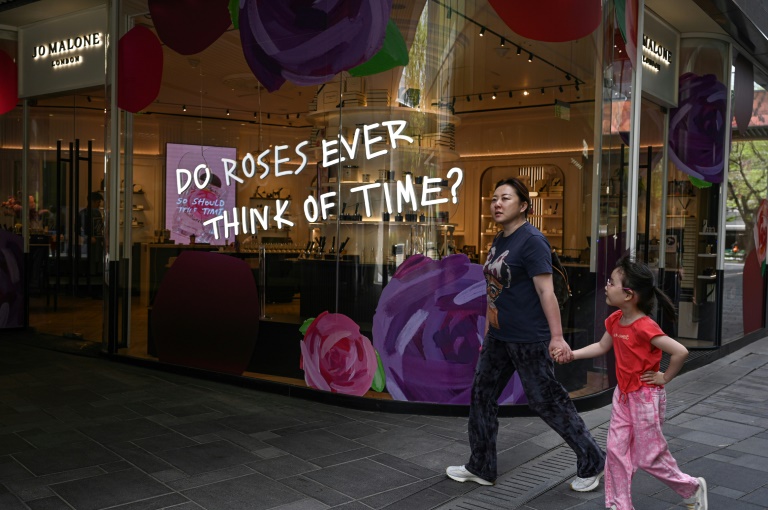China’s economy grew far more than expected in the first quarter of 2024, data showed Tuesday, even as it is buffeted by a property-sector crisis and flagging consumer spending.
Beijing has set a target of around five percent growth for the year, a goal officials last month admitted would “not be easy” and which analysts said was ambitious given the headwinds the country is confronting.
For the first three months of the year, gross domestic product rose 5.3 percent, compared with 5.2 in the previous quarter, the National Bureau of Statistics said.
The figures well exceeded analysts’ expectations, with those pooled by Bloomberg having estimated the figure would come in at 4.8 percent.
“The national economy continued the good momentum of a rebound,” the NBS said, calling it a “good start”.
The GDP data remains a key insight into the health of the world’s second-largest economy, despite being eminently political.
Tuesday’s figures “beat the market expectation by a wide margin”, Dan Wang, chief economist at Hang Seng Bank China, told AFP.
“Consumption and housing investment was the main drag, while manufacturing and infrastructure were the main engines,” she said.
It reflects “the fundamental policy shift from a focus on (the) consumer market and service sector to… industrial growth”, she added.
But woes in the property market remained a millstone for the economy as home prices continued to fall and top developers including Country Garden and Vanke sent out distress signals over their profits and challenges paying off debt.
Reflecting those difficulties, last month also saw a fall in property prices in China’s major cities, data showed.
Fears that China could slip back into deflation are also looming.
One analyst warned that “the good news ends” with the real GDP figure, which is adjusted to take into account inflation.
“Deflation is evident in GDP and in producer prices,” Derek Scissors, a senior fellow at the American Enterprise Institute (AEI), said.
“Benchmark indicator retail sales were slower than last year at this time,” he added.
“There are two reads on the full set of figures: China’s surprising real GDP growth is unsustainable or China’s surprising real GDP growth is fake.”
– Growth still sluggish –
Ratings agency Fitch last week downgraded the country’s sovereign credit outlook to negative, warning of “increasing risks to China’s public finance outlook” as it contends with more “uncertain economic prospects”.
Policymakers have announced a series of targeted measures as well as the issuance of billions of dollars in sovereign bonds to boost infrastructure spending and spur consumption.
But analysts say much more needs to be done in the form of a “bazooka” stimulus.
Beijing insisted on Tuesday that state efforts to boost growth were “producing effects”.
And Zhiwei Zhang, president and chief economist at Pinpoint Asset Management, said in a note that “strong Q1 growth will make the government comfortable with the current policy stance”.
Growth is particularly hampered by sluggish confidence among households and businesses in the context of this economic uncertainty, which is hammering consumption.
But some sectors are doing well, notably services, as customers return to restaurants, travel internally and visit tourist spots.
However, both retail sales — the main indicator of household spending — and industrial output slumped last month, officials said.
Retail sales grew just 3.1 percent on-year, down from 5.5 percent in the first two months of 2024, while industrial production rose 4.5 percent, compared with seven percent in January-February.
Notably, the unemployment rate fell in March to 5.2 percent, from 5.3 in February.
That figure, however, paints an incomplete picture as it only includes workers in cities, effectively excluding millions of migrant labourers from rural areas who are particularly vulnerable to the downturn and whose situation has been exacerbated by the housing crisis.
sbr-oho/cwl
